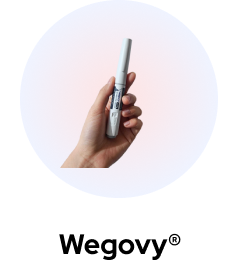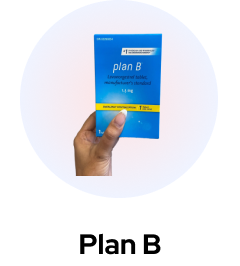What are we trying to achieve with Headache treatment
There are various different reasons why someone may need headache treatment. There are some common goals that apply to most types of headaches when treating. Easing pain related to the nausea and vomiting associated with the headache is one of the important goals as this causes a lot of discomfort. Preventing headache symptoms from repeatedly recurring over and over again is also an important factor that needs to be addressed. Identifying the cause of the headache (tumor or infection) is very vital so the treatment can cure those conditions. Once beginning general headache treatment with medications, side effects attributed to those drugs are important to monitor and prevent.
Identifying if you have a headache
There are many symptoms associated with a headache that need to be assessed by a doctor before diagnosing an individual with a headache disorder. When visiting the doctor, there are some symptoms that are necessary to bring up to the doctor’s attention. Mentioning whether or not the headaches are happening all of a sudden or if the symptoms grow gradually over time to eventually become a headache. Do the symptoms usually go away on their own without treatment? Are there certain triggers that individuals have noticed that trigger or further worsen their headache symptoms (menses)? What is the timeline like for these headaches, are they clustered during certain times while having a significant duration of time between them (could possibly even be years in between clusters of headaches)? Mentioning specific symptoms being experienced is important such as nausea, vomiting, smelling odors, hearing noises or having a sensitivity to light. One major thing to mention is whether or not the headaches are disrupting normal daily life activities since this is something that can have a negative impact in the future success of that individual. Doctor will also assess for any physical issues that relate to sensory function, motor function and cognitive capacity.
Red Flags that should be addressed immediately
Some symptoms need to be monitored that signify a bigger issue that needs immediate medical attention. If the headache is happening at a very young age such as children that is a red flag. Symptoms also happening to individuals from middle age to elderly should also be concerning. If the headache is happening abruptly and the symptoms associated with that headache is serious then that is a concerning sign. If the headache is getting worse over time and the frequency of the headache is also increasing, then this will also be a reason to visit a medical professional. The pattern of the headache is also important in terms of the symptoms being consistent or changing from time to time. If the neck feels stiff or consciousness is being affected in anyway, this may be a more serious condition. Monitor for symptoms of feeling sick or having a temperature anywhere in the body, since this will need to be assessed by a doctor to make sure it’s nothing serious.
Risks that need to be assessed
There are certain factors that can put individuals at a greater risk of getting Headaches and need to be assessed. Being female puts individuals at higher risk of getting headaches compared to males. There are certain medical conditions such as depression that may contribute to headaches. Having anxiety can also play a role in triggering headaches. Obesity may contribute to the frequency of headaches. Having disruptions with sleep can also play a role in causing headaches. Snoring may be a factor in exacerbating the issue as well. Overusing certain medications to treat headaches can also ironically lead to more headaches if used improperly long term. Caffeine overuse has been shown to worsen headaches as well. Having chronic pain in general can also put individuals in an increased risk category for getting headaches. There are drugs that can potentially play a role in causing headaches such as antibiotics, corticosteroids and various different blood pressure medications and pain medications.
The Types of Headaches to be aware of
There are several types of headaches. The 3 types of headaches that are most common are tension type headaches, migraine headaches and medication overuse headaches. The first type of headache is Tension type headache. Individuals who have at least two of the following symptoms are to be identified as having tension type headaches. Patients may be having mild to moderate symptoms and have symptoms such as pressing or tightening in the head. These symptoms can appear on both sides of the head. When exercising or engaging in activities, these symptoms should not be worsened. The duration of the headache could sometimes even last 7 days straight. Tension type headaches are the most common type. Migraine headaches can be further divided into headaches with aura and headaches without aura. The third headache can be caused when medications are used excessively to treat the other two headaches.
Tension type headaches do differ from migraines. There are many aspects we can compare to see how they differ. For instance, migraines have a feeling that is throbbing and can be pulsating as well. Tension type headaches rather have a tightening and pressing feeling which is not pulsating. Tension type headaches usually are mild to moderate as mentioned above and migraines are more moderate to severe. Tension type headaches are usually felt on both sides of the head as opposed to migraines which are only felt on one side. Both types of headaches can be less than 15 days long or manifest at greater than 15 day intervals. Tension type headaches are more varied in their duration and can potentially last up to 7 days whereas migraine headaches have a shorter duration that can be anywhere in the range of 4 hours to 72 hours. As mentioned above tension type headaches are not affected by physical activity but migraines can be affected. Migraines should have at least one of the following symptoms and these can occur with or without aura. These include nausea/vomiting and/or photo/phono phobia. Tension type headaches don’t have nausea/vomiting but may have photo/phono phobia.
There are various different treatments for headaches. Nonpharmacological and pharmacological methods
Non-pharmacological Methods:
Identifying triggers
There are many non-pharmacological methods that can be tried before moving on to drug therapy. One method is to recognize that there are triggers to headaches. inadequate sleep or too much sleep can trigger headaches. Having meals that are not consistent to a regular regimen can also trigger headaches. Engaging in exercise that doesn’t follow a regular routine is also a factor that can exacerbate headaches. Certain foods may trigger headaches and also need to be identified. Stressors in life can be a big player too. Each of these triggers can be identified and avoided. There are some options to help relieve headaches from these factors. One option is to apply ice to the affected area. Second option is trying to catch up on sleep by sleeping in a dark and noise-free room which can help.
Alternatives to Medication
There are some alternatives that can be tried before resorting to medicine. For instance, acupuncture is an option that has been available for a long time in human history. There are studies that show this will benefit individuals with headaches by decreasing the frequency of the headaches as well as the intensity felt. Massage is also an option if there are tight muscles in certain areas of the body. Massaging also helps individuals relax and achieve a calm state of mind which will reduce the stress that may have been triggering the headache. There are options where electricity can be used to stimulate certain nerves and this device can be surgically inserted into the body near the nerve that needs the additional stimulation, and this will decrease the pain associated with the headache.
Natural Health Products
Some natural health products are available to prevent migraine headaches. For instance, butterbur has shown that it is effective in decreasing headache frequency by 50% after four months of use compared to no treatment at all. Coenzymeq10 was shown to be effective as well but this was only in 42 patients that were in the study, so more research is needed. Melatonin is a great option since it has been shown through studies to be effective. Melatonin is even comparable to drug options such as amitriptyline. Magnesium is also showing promising effects especially in those individuals that have magnesium deficiency. Other options also exist such as riboflavin and feverfew.
Moving on to Prescription medication
Painkillers
First option we will discuss is using a painkiller such as Tylenol, aspirin, diclofenac, Advil and naproxen. These options are mainly recommended for headaches that are moderate or mild. It is important to understand overusing these medications can cause more headaches in the long term, so these aren’t good long-term options. They should only be used for up to 15 days in a month. Some products may come in combinations with opioids such as codeine and tramadol products and these should be limited to under 10 days per month due to its addiction potential.
Ergot Derivatives
Another option is ergot derivatives. It acts on the body centrally, specifically targeting receptors such as dopamine and adrenergic. This is a good option to use on headaches being caused by withdrawal symptoms from pain killers or to treat headaches that are very hard to treat. With this option there is the issue of overuse headaches being caused if this is used for more than 10 days a month. There is no dependence issue with this option so that is a good characteristic.
Triptans
This option is primarily meant to treat migraines. This medication acts on many aspects of the brain such as the neurons, blood vessels and serotonin receptors. It works by constricting blood vessels as well as preventing inflammation in the brain. There are newer forms of triptans that can modify pain transmission. There is a lot of good evidence these medications work and are safe (few side effects). It is convenient since there are so many options in terms of dosage forms such as nasal sprays, tablets, melting tablets and injections.
Prevention
The options mentioned above are to treat headaches. The next options are to prevent headaches from happening. These medications need to be trialed for at least 2 months to see if they work. If headaches are decreased by more than 50%, this is considered an effective medication.
Beta Blockers
First option on the list is beta blockers. The mechanism of action for this medication isn’t clear yet. The most studied beta blocker for preventing migraines is propranolol but atenolol is also a good option (with less evidence). In terms of side effects atenolol and nadolol seem to be better compared to the other betablockers.
Tricyclic Antidepressants
Another option is tricyclic antidepressants for migraine prevention. This class of medications is most effective for tension type headaches. This medication isn’t addicting and is safe to take in terms of side effects. It is important to understand that this class of medication has shown serious heart issues with patients, so it is important to assess for heart problems with the patient (also assess family members for heart issues).
Venlafaxine
Venlafaxine is also a good option and the mechanism it acts on is to prevent the reuptake of two neurotransmitters called serotonin and norepinephrine. This medication has shown evidence in decreasing the number of headaches patients experience. This is a good option if the patient has other conditions at the same time such as anxiety and depression.
Calcium channel blockers
Calcium channel blockers work by emphasizing on neurotransmitters more as opposed to working on the blood vessels. One option in this class that has shown a lot of evidence in cluster headaches is verapamil. Another option is flunarizine which is effective but can have negative outcomes such as depression. Individuals who had depression in the past should definitely not be on this medication to prevent any negative outcomes.
Some other options
Some other options that are used for preventing headaches are ACE-inhibitors, ARBs, antiepileptics, serotonin antagonist, triptans and lithium.












 (US)
(US)